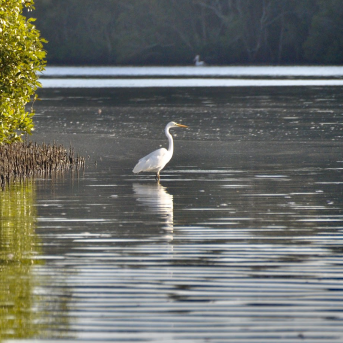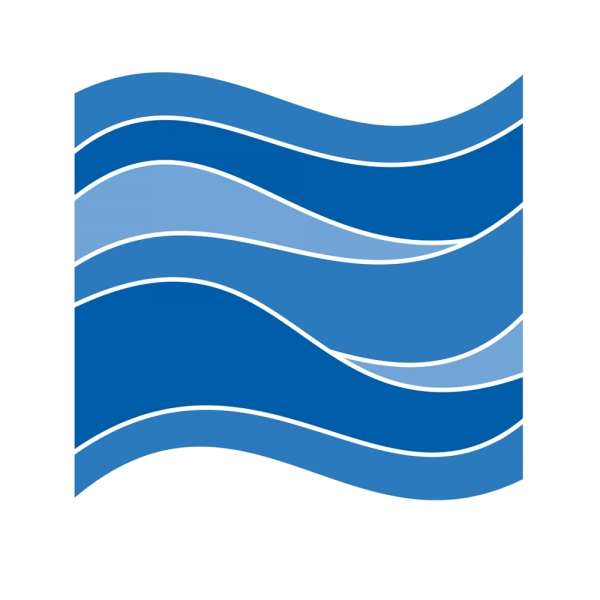Blue carbon

WRL are leaders in implementing large-scale Blue Carbon restoration projects in Australia. Recently, we have contributed to the development of the Blue Carbon Method; outlining how to register and initiate restoration of Blue Carbon habitats as part of Australia's Emissions Reduction Fund. The Blue Carbon Method is focused on the introduction of tidal flows to low-lying coastal floodplains through the modification or removal of existing infrastructure.
Engineering Blue Carbon ecosystems
Highlights of our specific expertise in Blue Carbon research includes:
- WRL are leaders in implementing large-scale Blue Carbon restoration projects in Australia.
- We are outcome focused, with 25+ years experience, totalling 1,000+ hectares restored across multiple sites.
- WRL has been pioneering Blue Carbon research with a focus on best practice engineering techniques, cost-benefit economics, ecosystem services and climate change.
- Our engineers are co-authors of the Blue Carbon Method.
What is Blue Carbon?
Blue Carbon is the carbon captured by the world's ocean and coastal ecosystems. Coastal Blue Carbon ecosystems, including mangrove forests, saltmarshes, and seagrass meadows, are highly effective at sequestering carbon from the atmosphere and locking it away for very long periods of time. For instance, mangroves in tropical regions can store up to 6–8 tons of CO₂ equivalent per hectare per year, which is four times greater than rates observed in mature tropical forests1. Australia is considered a global hotspot for Blue Carbon, with estimates that 5–11% of the global coastal Blue Carbon stocks already exist here2. In addition to carbon sequestration, Blue Carbon ecosystems also provide high priority habitats and countless ecosystem services such as fisheries productivity, nutrient removal, recreation and flood protection.

Past
What is the state of Blue Carbon in Australia?
Coastal Blue Carbon ecosystems in Australia have suffered dramatic losses since European settlement. To date, approximately 50% of saltmarshes, 52–78% of mangroves and 20–26% of seagrass meadows in Australia have been lost2. Many of these losses are due to the conversion of coastal wetlands into low-lying farm paddocks via large-scale drainage works. Once drained, these paddocks often become the source of acidic and/or black water runoff, which causes large-scale fish kills3. These losses are further compounded by coastal squeeze, where hard barriers, such as flood protection levees, block the landward migration of Blue Carbon ecosystems under rising sea levels4. Saltmarshes are particularly vulnerable to coastal squeeze and are an endangered ecological community in NSW under the Threatened Species Conservation Act.

Present
Restoring Blue Carbon ecosystems
There is great potential for large-scale Blue Carbon ecosystem restoration in Australia. Blue Carbon ecosystems can be restored by the introduction of tidal flushing and inundation across suitable low-lying coastal areas. Due to the geography and favourable legislative conditions, NSW has sufficient land available and can promote Blue Carbon restoration projects at a much larger scale than elsewhere. Due to sea level rise, areas that were historically situated above mean sea level (MSL) are increasingly becoming suitable for the establishment of Blue Carbon ecosystems.

Future
The Blue Carbon economy and the ERF’s Blue Carbon Method
At scale, Blue Carbon ecosystem restoration creates socio-economic benefits, boosts the ecological productivity of the marine estate, and provides economic incentives for landholders to change land management practices and adapt to sea level rise. In recognition, the Australian Clean Energy Regulator’s Emissions Reduction Fund (ERF) is developing a Blue Carbon Method which will make Blue Carbon ecosystem restoration projects eligible for receiving Australian Carbon Credit Units (ACCUs). This method will likely be finalised in late 2021 and create a Blue Carbon market, where ongoing payments are provided for activities that convert low-lying coastal areas into intertidal Blue Carbon ecosystems via tidal introduction. The UNSW Water Research Laboratory is directly involved with the development of the hydrological assessment component of the ERF Blue Carbon Method and provides consulting services to a broad range of industry and government partners. (https://consult.industry.gov.au/blue-carbon-method, opens in a new window).
Our expertise and services
- Leaders in implementing Blue Carbon restoration projects in Australia
- Detailed hydrological site assessments and feasibility studies for Blue Carbon restoration projects
- 25+ years of on-ground experience in coastal wetland assessments and restoration
- Leading the development of the hydrological component of the Clean Energy Regulator’s Blue Carbon Method
- Field data collection and state-of-the-art monitoring in coastal wetlands (drones, telemetry, remote sensing, AI)
- Pioneering methods and hydraulic infrastructure design for tidal restoration activities (Smartgates)

- Research
- References
- Rayner, D., Glamore, W., Grandquist, L., Ruprecht, J., Waddington, K., Khojasteh, D., 2021. Intertidal wetland vegetation dynamics under rising sea levels. Sci. Total Environ. 766, 144237. https://doi.org/10.1016/j.scitotenv.2020.144237, opens in a new window
- Glamore, W., Rayner, D., Ruprecht, J., Sadat-Noori, M., Khojasteh, D., 2021. Eco-hydrology as a driver for tidal restoration: Observations from a Ramsar wetland in eastern Australia. PLoS One 16, e0254701. https://doi.org/10.1371/journal.pone.0254701, opens in a new window
- Sadat-Noori, M., Rankin, C., Rayner, D., Heimhuber, V., Gaston, T., Drummond, C., Chalmers, A., Khojasteh, D., Glamore, W., 2021. Coastal wetlands can be saved from sea level rise by recreating past tidal regimes. Sci. Rep. 11, 1–10. https://doi.org/10.1038/s41598-021-80977-3, opens in a new window
- Khojasteh, D., Glamore, W., Heimhuber, V., Felder, S., 2021. Sea level rise impacts on estuarine dynamics: A review. Sci. Total Environ. 780, 146470. https://doi.org/10.1016/j.scitotenv.2021.146470, opens in a new window
- http://estuaries.wrl.unsw.edu.au/index.php/climate-change/risk-assessment-guide/, opens in a new window
- Heimhuber, V., Glamore, W. (2021) Hydrodynamic assessment of tidal restoration options for Avalon Coastal Reserve. WRL technical report WRL TR 2021-AVL
- Troy Gaston, Will Glamore, Matt Taylor, Colin Creighton, Kylie Russell, Vincent Raoult, Valentin Heimhuber (2021) Knowledge for Productivity: Phase I - Lake Wooloweyah. Technical Report. Fisheries Research and Development Corporation project nr. 2019-079
1The Blue Carbon Initiative: https://www.thebluecarboninitiative.org/about-blue-carbon#ecosystems, opens in a new window
2Serrano, O., Lovelock, C.E., B. Atwood, T., et al., 2019. Australian vegetated coastal ecosystems as global hotspots for climate change mitigation.
Nature Communications 10, 1–10. https://doi.org/10.1038/s41467-019-12176-8, opens in a new window
3https://www.dpi.nsw.gov.au/fishing/habitat/threats/fish-kills, opens in a new window
4Rayner, D., Glamore, W., Grandquist, L., Ruprecht, J., Waddington, K., Khojasteh, D., 2021. Intertidal wetland vegetation dynamics under rising sea levels. Sci. Total Environ. 766, 144237. https://doi.org/10.1016/j.scitotenv.2020.144237, opens in a new window

